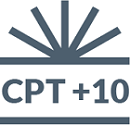Neuroteología: Un campo investigativo en desarrollo y en debate
DOI:
https://doi.org/10.35756/educaumch.202220.245Palabras clave:
conciencia, espiritualidad, interdisciplinariedad, mente, neuro-ciencia, neuroteología, religiónResumen
El artículo aborda las relaciones complejas y misteriosas entre el cerebro humano, su funcionamiento y la cognición, con la experiencia religiosa. La reflexión se entrelaza con las ciencias teológicas que intentan clarificar dónde el misterio de lo trascendente entra en contacto y se expresa en el ser humano y cómo el cerebro experimenta algunas situaciones religiosas. La neuroteología tiene el empeño de forjar un enfoque integrado de la naturaleza de la persona humana combinando lo físico y lo espiritual. Se formulan preguntas como: ¿Qué relación hay entre la “fe religiosa” con “actividad cerebral? ¿Qué relación existe entre las experiencias místicas y el sustrato biológico neuronal? ¿Existe una relación no causal, sino instrumental, entre ambas? Estamos en la frontera entre actividad secular y actividad religiosa y nos preguntamos: ¿Puede la tecnología utilizarse para comprender de manera más completa ciertos tipos de religiosidad?
Se puede afirmar que la conciencia es un aspecto clave para comprender cualquier tipo de experiencia religiosa. Desentrañar su fundamento neurológico es una de las grandes fronteras actuales. Dentro de la relación mente-cerebro se tratan aspectos de espiritualidad y ética. Estamos entrando a la época de la interdisciplinariedad. La teología y la ciencia se mueven en los márgenes máximos del misterio. El misterio abordado por la religión no puede ser resuelto con los métodos de la técnica ni de la ciencia en su totalidad. Estamos en una etapa fascinante de exploración. Existen algunos avances, pero queda un camino muy largo con muchas preguntas.
Métricas
Descargas
Referencias
Al-Nuaimi, S. K., Essa, M. M.,& Walid, M. (202o) Neurotheology - The triad of religion, spirituality, and neuroscience. Int J Nutr Pharmacol Neurol Dis, (10) 25-27.
Alper, M. (2001). The "God" part of the brain. Rogue Press.
Arana, J. (2015). La conciencia inexplicada. Biblioteca nueva.
Beauregard, M., & Paquette, V. (2006). Neural correlates of a mystical experience in Carmelite nuns. Neuroscience Letters, (405) 186–190.
Bennett, C.M., Miller, M.B. (2010). How reliable are the results from functional magnetic resonance imaging? Ann N Y Acad Science, (1191) 133-55.
Blume, M. (2011). God in the brain? How much can Neurotheology explain? In: Becker, P., Diewald, U. (Eds). Zukunftsperspektiven im theologisch-naturwissenschaftlichen dialog. Vandenhoeck & Ruprecht. S 306-314.
Brefczynski-Lewis, J.A., Lutz, A., Schaefer, H.S., Levinson, D.B., & Davidson, R.J. (2007). Neural correlates of attentional expertise in long-term meditation practitioners. Proceedings of the National Academy of Sciences of the United States of America, (104) 11483-11488.
Brewer, J.B. (1998). Making memories: brain activity that predicts how well visual experience will be remembered. Science, (281) 1185-1187.
Cahn, B. R., & Polich, J. (2006). Meditation states and traits: EEG, ERP, and neuroimaging studies. Psychological Bulletin, (132) 180-211.
Cayoun, B. A., Francis, S. E., Shires, A. G. (2019). The clinical handbook of mindfulness‐integrated cognitive behavior therapy: A step‐by‐step guide for therapists. Wiley-Blackwell.
Cristiano, S. M., Aglioti, F. F., & Cosimo, U. (2014). Virtual lesions of the inferior parietal cortex induce fast changes of implicit religiousness/spirituality. Cortex (54) 1-15. https://doi.org/10.1016/j.-cortex.2014.01.023
Damasio, A., & Carvalho, G. B. (2013, February). The nature of feelings: evolutionary and neurobiological origins. Nature reviews Neuroscience, 14(2)143-52.
Decety, J., & Lamm, C. (2007). The role of the right temporoparietal junction in social interaction: How low-level cognitive processes contribute to metacognition. Neuroscientist, (13) 580-593.
Fenwick, P. (2011, March 4). The Neuroscience of Spirituality. [Conference presentation]. Royal College of Psychiatrists.
Francisco, Papa. (2015). Laudato si. Editrice Vaticana.
Fuchs, T. (2017). Ecology of the brain: phenomenology and biology of the embodied mind. (trad. Gonzalo Arrondo). Oxford University Press.
García-Baró, M. (2018). Sobre la esencial fragilidad de la filosofía. Revista de estudios culturales La Torre Del Virrey, 23(1) 65. https://search.proquest.com/scholarlyjournals/sobrelaesencialfragilidad-de-filosofía/docview/2162697349/se-2?accountid=8034
Giménez Amaya., & J. M. (2010). Entender mejor la libertad: un enfoque interdisciplinar entre Neurociencia y Filosofía. En: C. Diosdado, F. Rodríguez Valls, y J. Arana (Eds.), Neurofilosofía: Perspectivas contemporáneas. (pp 77-90). Sevilla: Thémata, Plaza y Valdés.
Granqvist, P. et al. (2005). Sensed presence and mystical experiences are predicted by suggestibility, not by the application of transcranial weak complex magnetic fields. Neuroscience Letters, (379) 1–6.
Henson, R. (2005). What can functional neuroimaging tell the experimental psychologist? Q. J. Exp. Psychol. (58) 193-233.
Ives-Deliperi, V., Solms, M., & Meintjes, E. M. (2010). The neural substrates of mindfulness: An fMRI investigation. Social Neuroscience, (iFirst), 1–12. https://doi.org/10.1080/17470919.2010.513495
Johnston, E., and Leah, O. (2015). The feeling brain: The biology and psychology of emotions. New York: W.W. Norton.
Johnstonea, B., Bodlinga, A., Cohenb, D., Christc, S. E., & Wegrzync, A. (2012). Right parietal lobe-related “selflessness” as the neuropsychological basis of spiritual transcendence. International journal of the psychology of religion. https://doi.org/10.1080/10508619.2012.657524
Kanwisher, N. (2010). Functional specificity in the human brain: A window into the functional architecture of the mind. Proceedings National Academy of Science, (107) 11163–70.
Kelleyian, A. (2020). Psicología cristiana y neuroteología bíblica: Una ayuda integral. Digital Edition.
Kenett N. Y., & Faust, M. (2019). A semantic network cartography of the creative mind. Trends in Cognitive Sciences, (23) 271–74. https://doi.org/10.1016/j.tics.2019.01.007
Klemm, W. R. (2019). Whither Neurotheology? Religions, 10(11) 634. http://dx.doi.org/10.3390/rel10110634
Kosslyn, S. M., & Koenig, O. (1992). Wet Mind: The New Cognitive Neuroscience. New York: The Free Press.
Lazar, S.W., Bush, G., Gollub, R.L., Fricchione, G.L., Khalsa, G., Benson, H. (2000). Functional brain mapping or the relaxation response and meditation. Neuroreport, 11 (7) 1581-1585.
Leaf, C. (2013). Switch on your brain: The key to happiness, thinking, and health. Grand Rapids: Baker Books.
LeDoux, J. E., & Hirst, W. (Eds). (1986). Mind and brain: Dialogues in cognitive neuroscience. New York: Cambridge University Press.
Martín, L. (2012). ¿Puede la neuroteología ser considerada una disciplina científica? Stoa, 3(6), 5–29.
Martínez, A. (2009). Neuroteología. Neurología Suplementos, 5(1), 23-27.
Muntané, A. (2020). Neurociencia, filosofía y teología: Una complementariedad necesaria. AMUsA.
Muntané, A., Moro, Mª. L., Moros, E. R. (2008). El cerebro: Lo neurológico y lo trascendental. EUNSA.
Newberg, A. (2010). Principles of Neurotheology. Surrey: Ashgate Publishing Ltd.
Newberg, A. (2018). Neurotheology: How science can enlighten us about spirituality. Columbia University Press.
Newberg, A., Pourdehnad, M., Alavi, A., & d'Aquili, E.G. (2003). Cerebral blood flow during meditative prayer: preliminary findings and methodological issues. Perceptual and Motor Skills, 97, 625-630.
Newberg, A., Wintering, N., & Waldman, M. (2019). Comparison of Different Measures of Religiousness and Spirituality: Implications for Neurotheological Research. Religions, 10(11). https://dx.doi.org/10.3390/rel10110637
Nunez, P. L. (2010). Brain, mind, and the structure of reality. New York: Oxford University Press.
Poldrack, R.A. (2010). Mapping Mental Function to Brain Structure: How Can Cognitive Neuroimaging Succeed? Perspectives on Psychological Science, (5) 753-61.
Raichle, M.E. (2009, February). A brief history of human brain mapping. Trends in neuroscience, 32,(2). 118-126.
Rosen, B. R., & Savoy, R. L. (2012). Fmri at 20: has it changed the world? Neuroimage, (62) 1316-1324.
Sobhani, M., Bechara, A. (2011, October 01). A somatic marker perspective of immoral and corrupt behavior. Social neuroscience, 6(5-6) 640-652.
Sternberg, R. J. (ed.) (1999). The nature of cognition. New York: M.I.T. Press.
Publicado
Versiones
- 2022-12-20 (2)
- 2022-12-20 (1)
Número
Sección
Licencia
Derechos de autor 2022 Luis Carlos Gutiérrez Blanco

Esta obra está bajo una licencia internacional Creative Commons Atribución 4.0.
En caso de que el manuscrito sea aprobado para su próxima publicación, los autores conservan los derechos de autor y ceden a la revista el derecho de la publicación, edición, reproducción, distribución, exhibición y comunicación en el país de origen, así como en el extranjero, mediante medios impresos y electrónicos en diferentes bases de datos.
Para identificar que los artículos son originales e inéditos el autor debe llenar los siguientes formatos:
- Formato 1 - Datos de autores.
- Formato 2 - Declaración jurada sobre originalidad y autorización para la publicación de artículos.
- Formato 3 - Conformidad con la ciencia abierta.




















